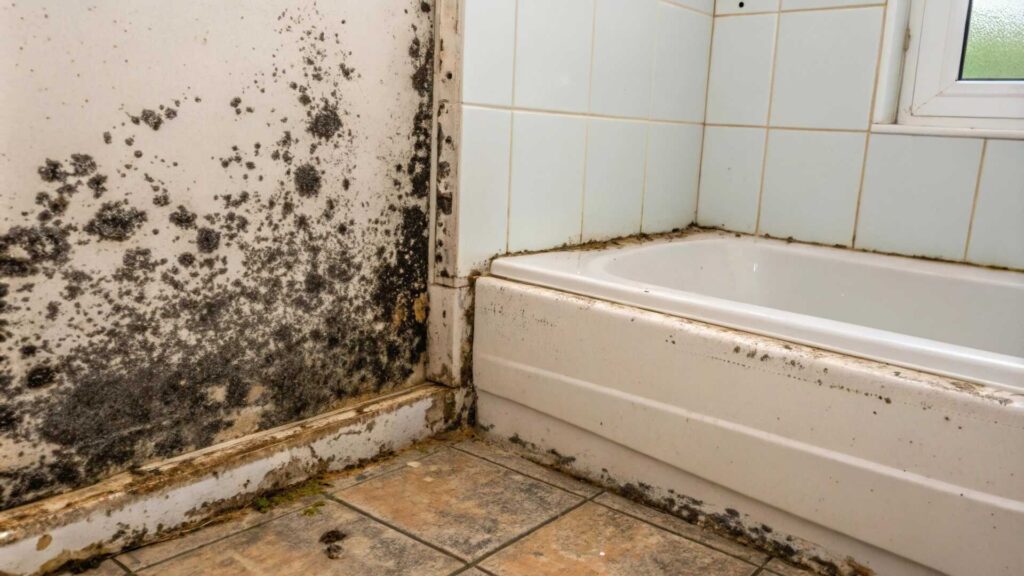
Contents
You might think sewage cleanup is something you can handle on your own, but the reality is that professional expertise is vital for ensuring safety and thorough restoration. When faced with contamination, knowing what equipment and methods to use can make all the difference. Understanding the complexities of sewage and water damage might seem overwhelming, yet it’s essential for protecting your health and property. Curious about how to choose the right experts to tackle these significant issues? Let’s explore the key factors you need to evaluate.
Key Takeaways
- Hire certified professionals with experience in sewage cleanup and water damage restoration to ensure effective and safe solutions.
- Utilize advanced extraction methods and powerful vacuum systems for efficient sewage removal and thorough cleaning.
- Ensure all cleanup personnel wear appropriate PPE to protect against harmful pathogens and contaminants during the process.
- Follow local regulations for the safe disposal of contaminated materials to minimize environmental risks and health hazards.
- Regular maintenance checks and emergency response planning can prevent future sewage issues and enhance overall preparedness.
Understanding Sewage Contamination
Understanding sewage contamination is essential for effective cleanup and prevention. When you encounter sewage issues, it’s imperative to recognize potential sewage sources, which can include broken sewer lines, overflowing toilets, or even natural disasters like floods. Each of these scenarios introduces harmful pathogens and hazardous materials into your environment, creating significant health risks.
Pathogens found in sewage can lead to various illnesses, ranging from gastrointestinal infections to more severe diseases. You should be aware that exposure to contaminated water can result in symptoms such as nausea, diarrhea, and fever. Particularly vulnerable populations, including children and the elderly, face even greater health risks. Consequently, understanding the nature of sewage contamination helps you take appropriate action for safety.
To mitigate these health risks, you must act quickly when sewage contamination occurs. Isolating the affected area and avoiding contact with contaminated water are immediate steps you should take.
In addition, it’s essential to assess the extent of the contamination to determine the necessary cleanup measures.
Essential Cleanup Equipment
When dealing with sewage contamination, having the right cleanup equipment is essential for effective remediation and safety. Using appropriate tools ensures a thorough cleanup and protects you from potential health hazards associated with sewage exposure.
Here are four significant pieces of equipment you should have on hand:
Personal Protective Equipment (PPE): Always wear gloves, masks, and protective clothing to shield yourself from harmful pathogens and chemicals.
Industrial Wet/Dry Vacuum: This powerful vacuum is designed to handle liquids, making it indispensable for removing sewage and standing water efficiently.
Disinfectants and Sanitizers: After water removal, using EPA-approved disinfectants is key to killing harmful bacteria and preventing future contamination.
Fans and Dehumidifiers: These are essential for drying out affected areas, which helps to prevent mold growth and further damage.
In addition to having the right cleanup tools, remember that regular equipment maintenance is critical.
Confirm your vacuums and other tools are in top working condition before starting any cleanup project. This will enhance their efficiency and extend their lifespan, saving you money in the long run.
Professional Sewage Extraction Methods
Professional sewage extraction methods are essential for ensuring effective remediation and minimizing health risks associated with contaminated environments. When you face sewage issues, employing the right sewage extraction techniques can greatly impact the recovery process. It’s imperative to act swiftly, as delayed response can exacerbate the contamination and lead to more extensive damage.
One widely used method involves powerful vacuum extraction systems. These systems are designed to remove sewage and wastewater efficiently, minimizing the time hazardous materials linger in your space. The advanced filtration attached to these systems ensures that harmful pathogens and pollutants are effectively captured, reducing the risk of cross-contamination.
Another effective technique is manual extraction, which may be necessary in scenarios where vacuum systems can’t access certain areas. Trained professionals use specialized tools to remove sewage from hard-to-reach spots, always prioritizing safety and thoroughness.
It’s also essential to monitor the moisture levels in the affected area during extraction, as lingering moisture can lead to mold growth and additional health hazards.
After the initial extraction, thorough cleaning and disinfection of surfaces are fundamental. This step eradicates remaining contaminants and prepares the space for restoration.
Safety Protocols for Cleanup
Establishing effective safety protocols is essential for anyone involved in sewage cleanup and water damage remediation. Your safety and that of your team depend on adhering to strict guidelines.
Here are four key safety protocols to follow:
Personal Protective Equipment (PPE): Always wear appropriate PPE, including gloves, goggles, and masks. This protects you from harmful pathogens and chemicals found in contaminated water.
Hazard Communication: Confirm that everyone on your team is aware of potential hazards. Utilize clear signage and verbal communication to identify risks in the work area. This fosters a culture of safety and accountability.
Proper Waste Disposal: Dispose of contaminated materials according to local regulations. This prevents further contamination and confirms compliance with environmental standards.
Emergency Procedures: Familiarize yourself with emergency protocols, including evacuation routes and first aid measures. Having a plan in place can save lives in critical situations.
Water Damage Restoration Process
In the water damage restoration process, you’ll start with a thorough assessment and inspection to identify the extent of the damage.
This step is essential, as it informs the cleanup and restoration strategy to effectively mitigate further issues.
Once you’ve gathered all necessary information, you’ll proceed with implementing targeted solutions to restore the affected areas.
Assessment and Inspection
Regularly evaluating and inspecting the affected areas is vital in the water damage restoration process. This step ensures you identify all issues early, preventing further complications.
Here’s what you should focus on:
Visual Inspection Techniques: Use systematic approaches to examine surfaces for discoloration, warping, or mold growth. These signs can indicate hidden water damage.
Moisture Detection: Utilize moisture meters to measure the level of dampness in walls, floors, and ceilings. This helps in pinpointing problem areas.
Environmental Assessment Tools: Implement tools like thermal imaging cameras to detect moisture behind walls that may not be visible during a standard inspection.
Documentation: Keep detailed records of your findings, including photographs and moisture readings. This data is vital for insurance claims and future reference.
Cleanup and Restoration Process
Once you’ve completed a thorough assessment and inspection of the affected areas, it’s time to move on to the cleanup and restoration process. This phase is essential for ensuring that your space returns to its original condition. It involves several steps, including water extraction, drying, and sanitation, using advanced cleaning techniques.
Here’s a brief overview of the indispensable steps you’ll follow:
| Step | Description |
|---|---|
| Water Extraction | Remove standing water using pumps and vacuums. |
| Drying | Utilize dehumidifiers and fans to eliminate moisture. |
| Cleaning | Sanitize surfaces with specialized cleaning agents. |
| Restoration | Repair and replace damaged materials. |
Incorporating emergency response planning is critical, as it prepares you for future incidents. By following these procedures, you restore your environment and create a safer space for everyone involved. Your commitment to these processes shows a dedication to maintaining a healthy home or business and fostering a sense of belonging and care within your community.
Preventing Future Sewage Issues
To prevent future sewage issues, you should prioritize regular maintenance checks of your plumbing and drainage systems.
Implementing proper waste disposal practices is essential to avoid clogs and backups that can lead to extensive damage.
Regular Maintenance Checks
Performing routine maintenance checks on your sewage system is crucial for preventing future issues and costly repairs.
By adhering to a well-structured maintenance schedule, you can implement effective preventative measures that will keep your sewage system functioning at its best.
Here are four critical components to include in your maintenance checks:
Inspect for Leaks: Regularly examine pipes and joints for signs of leaks, which can lead to significant issues if neglected.
Clear Blockages: Check drains and sewer lines for any signs of blockages. Early detection can save you from serious backups.
Examine Sump Pumps: Verify that your sump pumps are operational and free of debris. An efficient sump pump is crucial for preventing flooding.
Review the Ventilation System: Proper ventilation reduces pressure and prevents harmful gases from accumulating, safeguarding your home environment.
Proper Waste Disposal Practices
Proper waste disposal practices are crucial for maintaining a healthy sewage system and preventing future issues. You need to actively participate in effective waste segregation by sorting your trash into appropriate categories: recyclables, compostables, and landfill waste. This simple yet critical step minimizes the risk of clogging your sewage system with inappropriate items.
Participating in local recycling programs can greatly reduce the amount of waste entering your sewage system. When you recycle correctly, you help the environment and lessen the burden on waste treatment facilities. Remember, items like oils, fats, and certain chemicals should never go down the drain. Instead, dispose of them through designated collection methods.
Additionally, staying informed about hazardous waste disposal options in your community ensures that you’re not inadvertently contributing to sewage problems. Consider organizing neighborhood clean-up events to foster a sense of responsibility and community belonging.
Choosing the Right Experts
Selecting the right experts for sewage cleanup and water damage restoration is essential to ensuring thorough remediation and preventing further complications.
When you face such emergencies, choosing professionals with the right qualifications and proven track records can make all the difference. Here are four key considerations to guide your decision:
Expert Qualifications: Confirm the technicians have certifications from recognized organizations, such as the Institute of Inspection, Cleaning, and Restoration Certification (IICRC). This indicates their commitment to industry standards.
Service Reviews: Look for testimonials and reviews from previous clients. High ratings and positive feedback can provide insight into the effectiveness and reliability of the service.
Experience in the Field: Opt for experts who’ve substantial experience dealing with sewage and water damage. Their familiarity with various situations may lead to quicker and more effective solutions.
Comprehensive Services: Choose a company that offers a full range of services, including assessment, cleanup, and restoration. This ensures that you won’t need to engage multiple contractors for different aspects of the job.
Recap
Effective sewage cleanup and water damage solutions are vital for maintaining a safe environment. For instance, a family in a flooded basement faced severe contamination risks, but with the help of certified professionals utilizing advanced equipment, the area was thoroughly restored. They employed industrial vacuums, disinfectants, and moisture monitoring, ensuring both immediate safety and long-term protection against future incidents. Trusting experts in these situations safeguards health and preserves property integrity, promoting community resilience.
Recent Posts
Mastering Biohazard Sewage Cleanup Techniques
Is it really worth the risk to tackle biohazard sewage cleanup without the right techniques?
Top Leak Detection Services for Homeowners
Is it true that most homeowners underestimate the impact of undetected leaks? You might think
What Are Effective Sewage Cleanup Solutions?
You might not realize that improper sewage cleanup can lead to long-term health risks and

